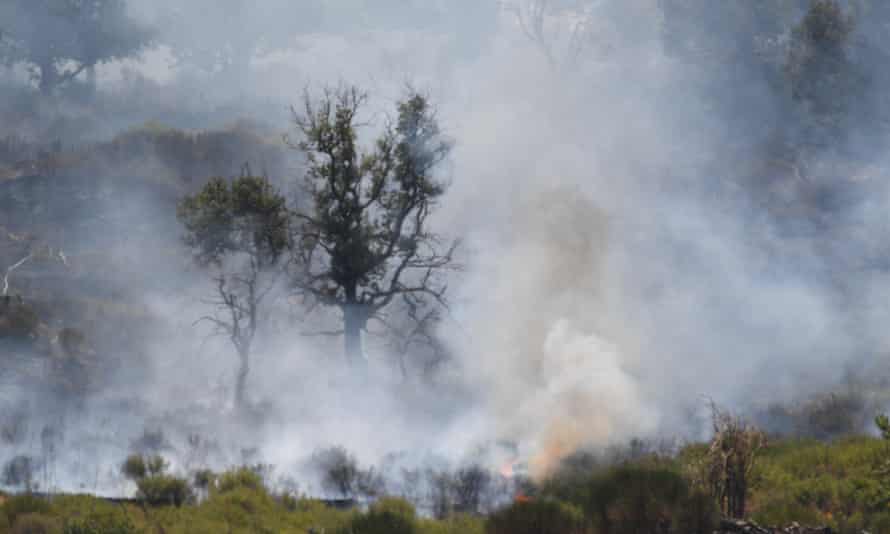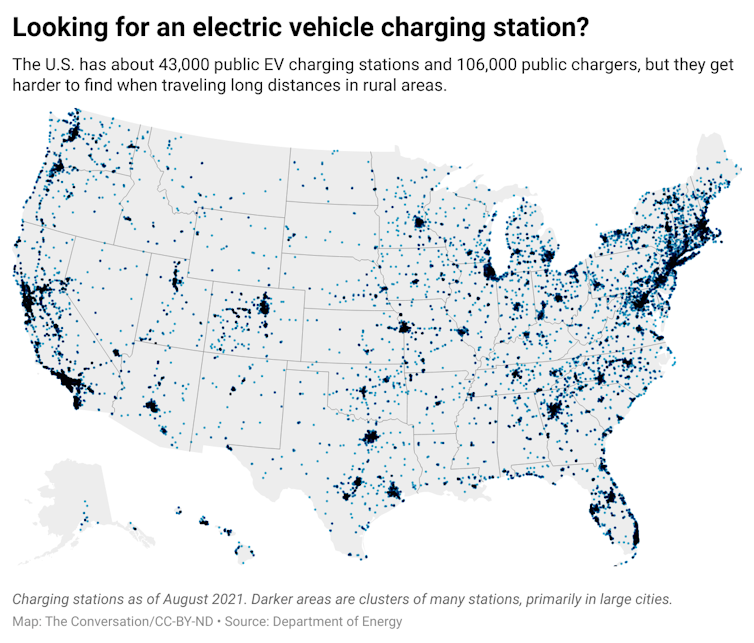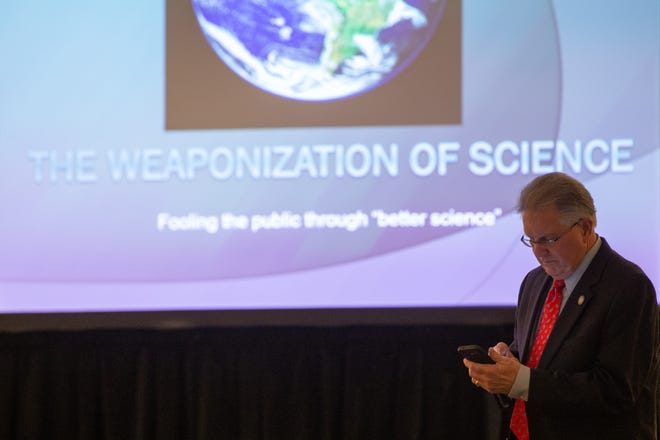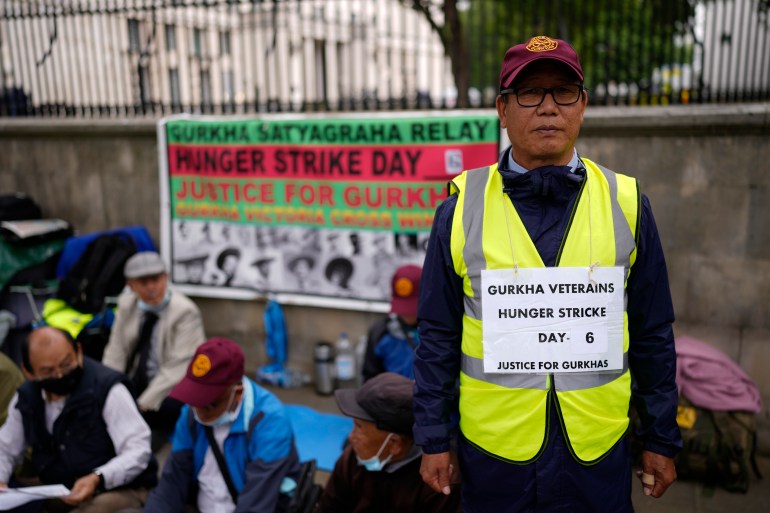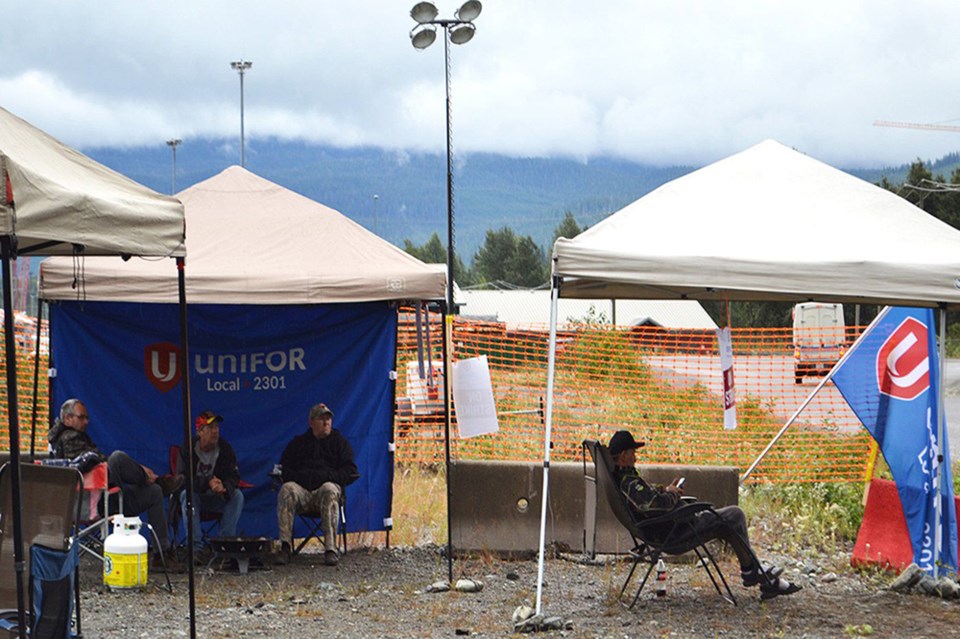China crackdown on tutoring sector leads to protests
The crackdown exacerbated financial problems for these firms, leading to more protests in any month since January 2019.
By Emily Tate Aug 16, 2021

The sky was still pitch-black when Anna Whitehead rose from bed to begin teaching for the day. It’s a routine she has grown accustomed to over the past two years—waking up around 4:40 a.m. and logging on, bleary-eyed, to teach English to a cadre of children in China.
Except this time, on Aug. 5, the routine was interrupted.
Whitehead, who on top of being an online English-language tutor works full-time as a high school teacher in a traditional classroom in Alabama, had received a frantic text from the mother of one of her Chinese students overnight. GoGoKid, the online tutoring platform that Whitehead contracts with to supplement her family’s income and help make ends meet, was shutting down immediately.
She checked her email, hoping the mother had misunderstood, and found a message from the company confirming its demise. “Dear teachers,” the email began. “This letter is to inform you that as of Aug 5th 2021, GOGOKID will suspend the curriculum offered to all Chinese students. This decision is in light of the recent educational policy revisions in China. All classes starting on Aug 5th will be cancelled from the system.”
“It was the worst possible outcome ... It just felt like the rug was yanked out from under us.”
The language—“suspend the curriculum”—was a bit vague, but the message was crystal clear: It was over.
Whitehead, who’d had 25-minute classes lined up back-to-back throughout the morning, watched in horror as each one disappeared from her schedule.
“It was the worst possible outcome,” she said in an interview the day after the email came through. “I could’ve at least given them an awesome lesson and told them goodbye. It just felt like the rug was yanked out from under us.”
For many of the thousands of Americans who tutor through GoGoKid, the news was shocking but not entirely surprising. They were bracing for some degree of changes, following China’s recent crackdown on tutoring. But even if the company was forced to shutter, few tutors expected it to happen this soon—or this abruptly.
“We had heard, about a month ago, that there were some sweeping regulations coming to China, so I had an idea something would change,” said Sharisse Quinones Robinson, an online English-language tutor for GoGoKid who lives in DeLand, Fla. “But I didn’t know it would be this severe, and I didn’t know we’d get zero notice.”
GoGoKid, an education product under Beijing-based company ByteDance (which also owns TikTok), collapsed overnight. Other companies in the space are slowly crumbling. Days before the GoGoKid email went out, rival service Magic Ears told teachers that it, too, would wind down its services over the next six to 12 months. Competitors such as QKids, Landi English and others have followed suit, saying that they would allow teachers to tutor until Chinese families’ pre-paid class packages run out. And recently, tutoring behemoth VIPKid sent out a notice to its foreign teachers saying that while it planned to continue to operate as a tutoring company in other countries, its business in China had only “several months” left.
“I had an idea something would change. But I didn’t know it would be this severe, and I didn’t know we’d get zero notice.”
Boom — and Bust
Quinones Robinson wasn’t wrong about a major shakeup to China’s online tutoring market. But she, like many others, underestimated its extent. In late July, the country rolled out new regulations that severely limit for-profit tutoring services and bar foreign investment in private education companies. It comes after years of enormous growth for China’s tutoring sector, including the emergence and expansion of a number of platforms that connect young children in China with native English speakers overseas for live, one-on-one language lessons.
By 2019, VIPKid, a major player in the online English-tutoring market, claimed to contract with nearly 100,000 American and Canadian tutors who served a combined 600,000 children in China. (VIPKid declined to share current numbers.) Qkids, meanwhile, claims on its website that it connects “over 1 million international young learners” with educators. The exact reach of these companies—this industry—is not clear, but their collective footprint is massive, global and estimated to be worth billions of dollars.
The arrangement worked well for both parties. Some Americans had finagled it into a full-time job, but more often, the platforms drew teachers who didn’t make enough money in the classroom alone to cover the bills. Many viewed tutoring as a flexible, fortuitous “side hustle,” a work-from-home slice of the gig economy. In China, wealthy and middle-class parents saw private English tutoring—especially led by native English speakers—as a way to get ahead, a canny edge on other students against whom their own children would some day have to compete.
While Chinese families have been forking over the equivalent of tens of thousands of U.S. dollars to support their children’s private educations after regular school hours—often at night, before bedtime—American tutors have been raking in up to $22 an hour by waking at the crack of dawn to squeeze in a few lessons before their own families wake up and the typical workday begins.
The official reason for the crackdown is that the financial pressure on Chinese families and academic pressure on Chinese children has become untenable. The high-stakes culture around education in China—and the subsequent costs associated with it—has become so fraught that many parents say they can’t justify having another child, which the Chinese government now encourages. It would simply break them financially. Recognizing this strain—and the declining birth rate it has perhaps led to—the Chinese government decided to act.
One unofficial reason for the new regulations, however, could be that companies like GoGoKid and VIPKid have provided Americans with unfettered access to young, impressionable Chinese children. As tensions between the United States and China escalate, many observers speculate that the Chinese government wanted to curtail Western influence on its youngest minds.
Americans who tutor for VIPKid and GoGoKid believe it’s a combination of those reasons. They have certainly seen first-hand the high expectations set for children in China.
“I have one student who said, on a Saturday, ‘I have 13 hours worth of class today,’” Whitehead recalled. “I said, ‘Wow,’ and she said, ‘Oh, it’s not so bad. I have a friend who has 17 hours.’”
Quinones Robinson used to teach a 5-year-old whose lesson began at 8:30 p.m. local time, and she said it was difficult to watch.
“He was exhausted. He was falling asleep,” Quinones Robinson said. “These kids are worked so hard. … Part of me thinks this will be good for them.”
“Do you really want a country that’s your adversary teaching your children? We have contact with these kids every day.”
Joe Madrid, an American tutor for GoGoKid who now lives in Chiang Mai, Thailand, said he’s taught kids who describe staying up doing their homework till midnight or 1 a.m. and going to training centers on weekends. The pressure and the burden on families are real, he said. But he thinks the new regulations have more insidious motivations as well.
“Do you really want a country that’s your adversary teaching your children?” Madrid asked, incredulous. “We have contact with these kids every day. … It seems like a strange thing to me.”
A One-Two Punch
Whitehead, the tutor based in Houston County, Alabama, has been a classroom teacher in the U.S. for eight years. Her husband is also a teacher. Their combined income from working in brick-and-mortar schools was not enough to cover basic needs. “Out of desperation,” Whitehead signed up to be an online English-language tutor a couple of years ago. It would end up being one of the most meaningful decisions and experiences of her life, she said.
Her monthly take-home pay from her full-time teaching position is about $2,500 to $2,800. She was bringing in another $1,500 to $1,800 a month by teaching 20-25 hours a week on GoGoKid and said that money is “absolutely essential” to her family’s livelihood.
“There are a lot of teachers who do this to make their ‘mad money,’ if you will,” Whitehead explained. “I do it for Christmas gifts, for paying credit card bills, for paying normal bills. It doesn’t just pad my income. It helps me stand up straight with my income.”

The timing stings. Whitehead and her husband recently bought a new house. “There has been debt incurred because of that, so it’s a tremendous financial blow,” she said.
For Quinones Robinson, online tutoring allowed her to leave an office job that she’d begun to resent and spend more time at home with her children. In 2018, when she got started with VIPKid and GoGoKid, she was a single mom who taught a few sessions in the mornings before work. In no time, though, she was making as much money tutoring as she was from her office salary and decided to hand in her resignation. For three years now, she said, she has been working 25 hours a week from home, in her pajamas, instead of 40 hours a week in business attire at an office: “It’s been awesome.”
Quinones Robinson was making $2,400 to $2,600 a month before GoGoKid’s “Dear teachers” email came through earlier this month and turned her world upside down. She and her husband also bought a new home back in December. “We have to pause for a moment,” she said about her family’s finances and lifestyle. “But I’ll figure this out, whether it’s through Instacart shopping or something else.”
“It’s a tremendous financial blow.”
Whitehead is confident she will find the money elsewhere, too—she mentioned interviewing for other jobs, selling “aggressively” on Teachers Pay Teachers and donating plasma. The harder blow, she said, is being cut off from the children that she has come to know and, by her account, love. When the pandemic began, many families shipped her face masks to make sure she was protecting herself. Some have sent her letters in the mail and gifts on her birthday.
“This is the first day in two years I haven’t gotten up to see them,” Whitehead said on Aug. 6, through tears. “It’s extremely emotional. … I have had the honor of being in their homes, seeing their families, meeting their pets, and hearing about injuries and favorite toys. It’s so different from the American education setting.”
Whitehead is connected to some of her students’ families on WeChat, separate from the GoGoKid platform. But others are “completely gone,” she said. She doesn’t know their real names. They live thousands of miles away. “They’re just gone. That’s the hardest part.”
One student, a girl called Tongtong, is among those that Whitehead feels she’s lost forever. On a video call for this story, she held up a drawing that Tongtong had made for her and then rattled off personal details about the girl: She wanted to be a lawyer. She has a pet bird. Her grandmother has a garden. She gets up every morning before 6 to read.
“I know these kids’ hopes. I know their dreams. I know their frustrations,” Whitehead said. “A million miles away, it’s so familiar.”
Forced Underground
Within hours of GoGoKid’s announcement to shut down, parents in China and tutors in America began scrambling to find one another. Parents in China set up virtual private networks to log onto Facebook, which is typically blocked in the country, and join private groups of GoGoKid teachers, searching for their child’s tutors by sharing screenshots from the app and listing usernames. Tutors, in turn, downloaded WeChat and listed themselves under the names they go by on GoGoKid (Quinones Robinson, for example, is “Teacher Edith”).
Everyone, it seemed, was frantic and desperate to be reunited after their GoGoKid accounts suddenly went dark.
One parent in China who found her way into a private Facebook group of GoGoKid teachers responded to questions via Facebook messenger, saying, “It is hard for me to accept the abrupt ending like this. I do believe many other parents should feel the same.”
The parent, who asked that her name be withheld since she is not supposed to be seeking out foreign educators, said that teachers and parents had formed WeChat groups and started Google Docs to share contact information. On Aug. 6, she said that some people had found who they were looking for.
“It is kind of like searching for your friends after the war,” she said. “Maybe I will never find them, since there are more than 10,000 teachers on GoGoKid. You cannot say how big [a] deal it is during your whole life. But the feeling of loss and being deprived would always be there.”
On Aug. 8, she followed up to say she had found her son’s teachers. “Wonders happened,” she wrote.
“Sometimes I feel guilty contributing to this constant education. But the thing is, these parents are going to find a way.”
Parents and tutors who were shut out of GoGoKid have wasted no time trying to recreate the arrangement on their own. Some of the parents of Whitehead’s students have found her and have asked her to continue teaching their children, through private lessons. She’s not sure exactly what that would look like, but imagines it could take place over Zoom and involve a lot of screen-sharing.
“It’s not just my families,” Whitehead said. “It’s all over. They’re desperate.”
Quinones Robinson had one parent contact her already. The child’s mom messaged her and said, “I found you!” And Madrid, the tutor who lives in Thailand, has already taught a private lesson to a student whose parent he was able to reconnect with on WeChat.
“The mother is not happy this happened, but she has more control now over what her child learns,” Madrid explained. “Now, we work together. I show her the lessons, she says, ‘This is what I want.’ It’s more collaborative.”
The same Americans who worry kids in China are being pushed too hard to excel are now helping parents set up an underground tutoring market. But many say that the continuation of private education services is inevitable, so why bow out now?
“Sometimes I feel guilty contributing to this constant education,” Whitehead said. “But the thing is, these parents are going to find a way. The way the society is set up, their future depends on what their children do.”
The Fate of the Others
GoGoKid may be gone, but other tutoring companies hope to hang on—some for mere months, and others for good.
In a recent email to teachers, Magic Ears leadership laid out a sobering future for the company.
“To be clear, the growth of the online ESL [English as a Second Language] industry is no longer being encouraged and it will not be permitted to expand,” the email said. “The new regulations set in place will restrict activity for all ESL companies based in China, it will shrink the industry and eventually it will be dissolved entirely. All companies, including Magic Ears, have downsized. We are now running on only a quarter of the staff that was initially supporting our students and teachers.”
The email goes on to say that the Chinese government will allow tutoring companies to honor their contractual obligations to parents who have already purchased bulk class packages. Some parents had purchased “many months or even a year of classes in advance.” The company expects to offer its final lessons in about a year’s time.
VIPKid emailed teachers on Aug. 7 with its own update.
“First and foremost, let us be clear that we are confident that VIPKid’s business will remain operational,” the email said.
Like Magic Ears, VIPKid will let parents in China who have purchased class packages finish out the lessons they have already paid for. “VIPKid teachers can still count on work for several months with students in China,” the notice reads.
After those classes have been taught, VIPKid’s service in China—at least as it currently exists, pairing North American tutors with Chinese children—will come to an end. But the company’s “long-term vision” involves expanding tutoring services into other countries, subjects and age groups. In the past year, VIPKid has been piloting a partnership with BookNook to provide reading services to students in the U.S. and is developing another service for adult learners across the globe.
“We expect these teaching opportunities to grow in the coming months,” VIPKid told teachers in the email. “It is our intention to minimize the impact to teachers.”
A spokesperson for VIPKid declined to share specific details around how much longer its one-on-one tutoring service in China may run, but said that as of Aug. 7, families in China can no longer purchase new classes with foreign educators.
Many tutors who have ongoing contracts with VIPKid are not optimistic that the company can pull off the international expansion. Chatter in private Facebook groups tends to be fatalistic.
The day after GoGoKid shuttered, Quinones Robinson woke up early and taught a child through VIPKid’s platform for the first time in a long time. She plans to tutor on VIPKid for as long as she can get bookings. But, expecting that VIPKid will fold soon, just like the others, she said she’d be building out her own private tutoring business in the meantime.
Emily Tate (@ByEmilyTate) is a senior reporter at EdSurge covering early childhood and K-12 education. Reach her at emily [at] edsurge [dot] com.
![China cracked down on the tutoring sector to level the playing for children across the country [File: Anthony Kwan/Getty Images]](https://www.aljazeera.com/wp-content/uploads/2021/08/377632079.jpg?resize=770%2C513)


